Dive into our Apistogramma care: size, diet, lifespan, and more – your complete guide to keeping these stunning dwarf cichlids happy in your tank.
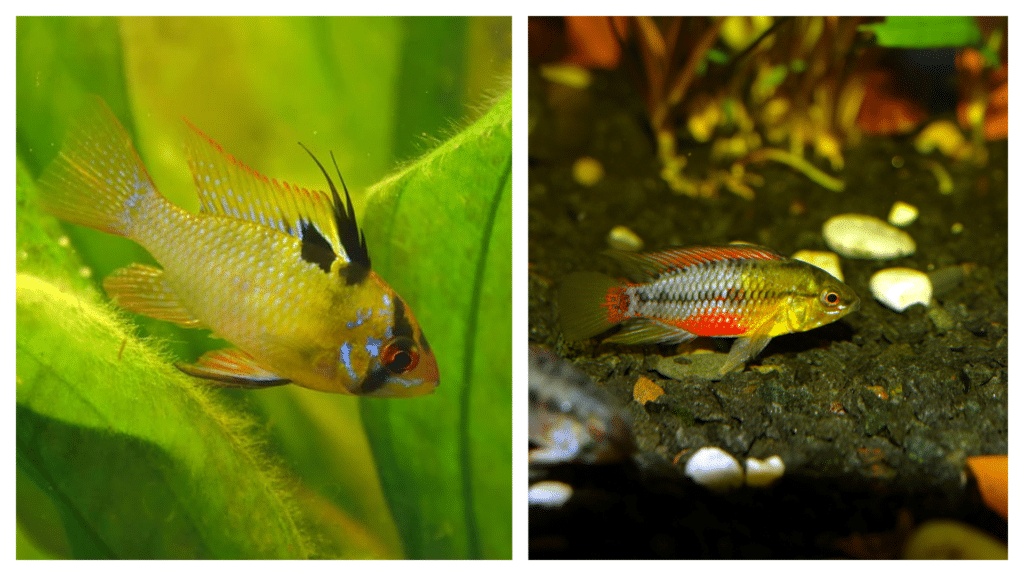
When it comes to keeping Apistogramma, those charming dwarf cichlids from South America, in your aquarium, you’re in for a captivating experience. These unique fish make great additions to your tank because of their vibrant colours and fascinating behaviour.
Are you considering adding Apistogramma to your aquarium? Then check out our guide to Apistogramma care, which covers size, diet, lifespan, and more.
The World Bucket List’s top facts about Apistogramma:
- The Apistagramma belongs to the cichlid genus of fish. This genus has over 90 recognised species, each with unique characteristics.
- These fish are native to South America. They are found in the Amazon Basin and in countries like Colombia, Brazil, and Peru.
- Some Apistogramma species are mouthbrooders. This means that females carry fertilised eggs in their mouths for protection.
- These fish are very adaptable and appear in various habitats, such as rivers, streams, and even flooded forest areas. This adaptability has contributed to the diversity of species within the genus.
- Apistogramma can be challenging to keep due to their specific water quality requirements and territorial behaviour. As such, while they are popular aquarium fish, this can make them difficult to maintain.
Size matters – various species with various sizes
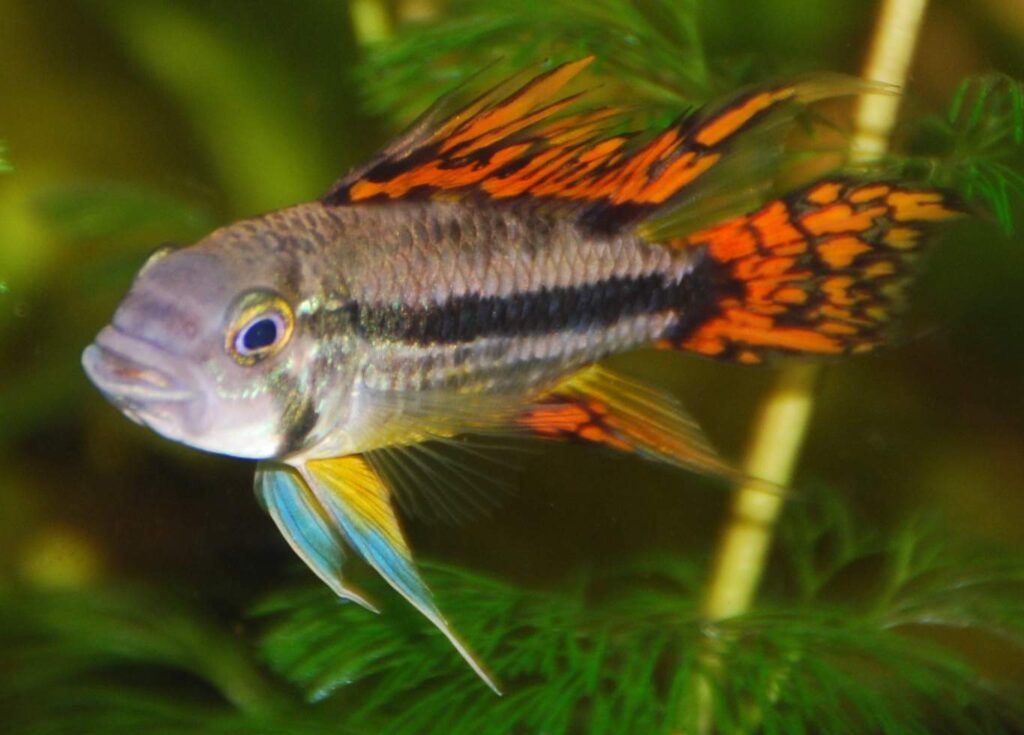
Apistogramma come in various species, with size variations among them. These dwarf cichlids measure between 2.5 and 8 cm on average. Their size makes them perfect for tanks as small as ten gallons.
Bear in mind, however, that some species grow slightly larger. We recommend researching the exact breed before you add Apistogramma to your tank.
Dietary delights – a balanced diet is essential

If you plan on keeping and raising Apistogramma, there are a few things you need to know about their dietary requirements.
In the wild, Apistogramma eats small invertebrates, algae, and some smaller species of fish. It might be difficult to match their diets, but a variety of foods is essential.
It is recommended to stock up on high-quality flakes, pellets, and live or frozen seafood like baby shrimp and vinegar eels. This mix will ensure they receive all the essential nutrients they need to thrive.
Habitat haven – plenty of plants
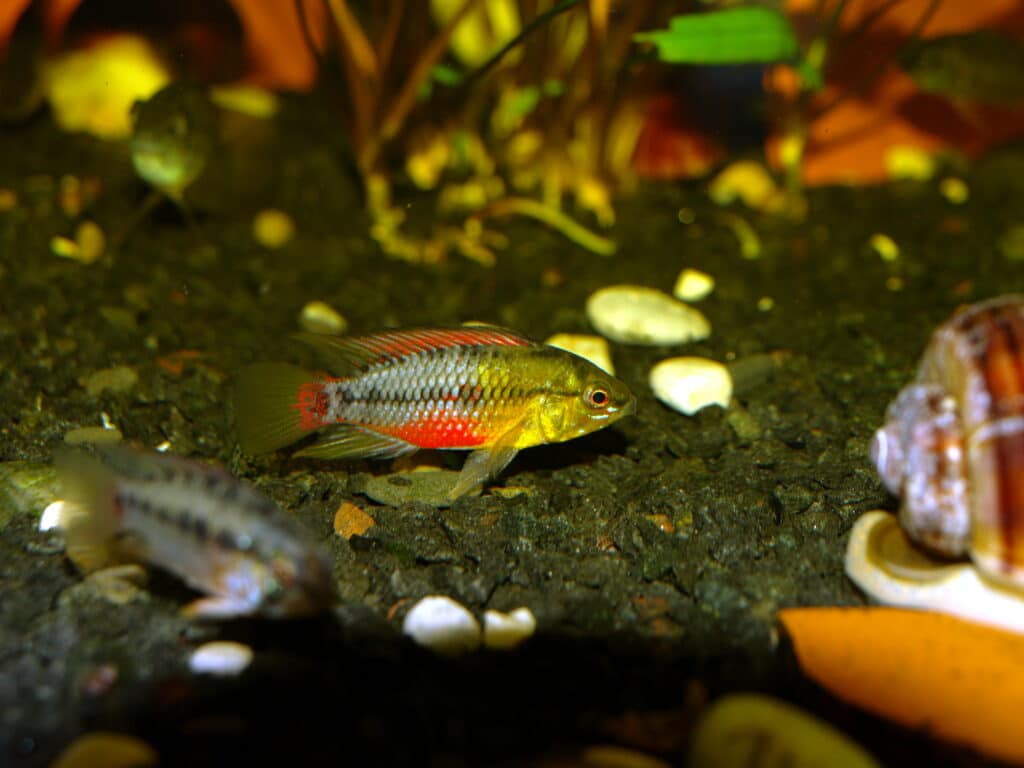
Creating an environment as close to their native habitat as possible is essential for Apisotgramma care. You should aim to use soft, slightly acidic water with a pH of around 6.
Recreating their native environment is essential for Apistogramma care. Provide a tank with soft, slightly acidic water and a neutral pH level, typically around 6 to 7 ppm.
We also recommend furnishing your tank with Java moss and artificial caves in your attempts to recreate the Apistogramma habitat. Ensure you leave enough space for the fish to establish their territory and minimise aggression.
Mating and breeding – colourful males
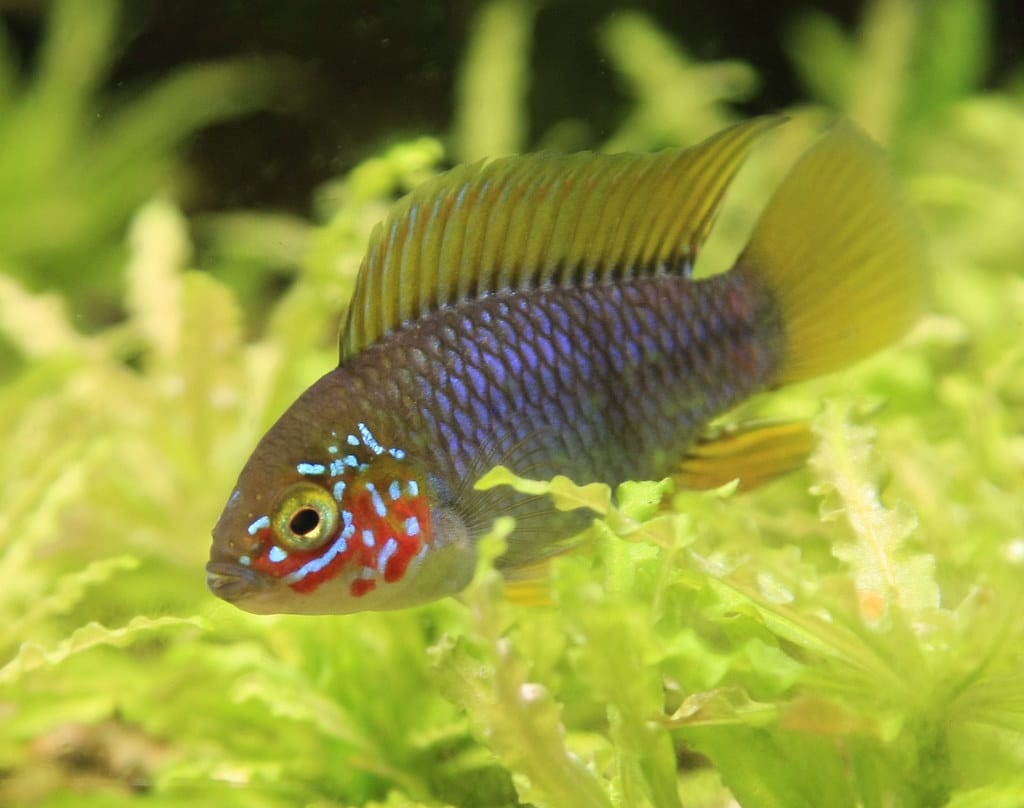
The mating behaviour of Apistogramma is very unique. Males are much more colourful than females and show off this colour to attract mates, much like a peacock.
Once mating takes place, eggs are often laid in a secluded spot, so account for some privacy in your tank if you plan to breed. See the dietary information above when it comes to feeding offspring.
Tank mates and behaviour – building your aquarium
When selecting tank mates for your Apistogramma, opt for peaceful community fish that can tolerate their occasional territorial aggression.
Avoid aggressive species that might stress them out. Good companions include tetras, rasboras, and peaceful catfish.
It is important to keep an eye on their behaviour. If conflict does arise, consider rearranging decorations or adding more hiding spots to avoid future mishaps.
RELATED: Top 5 unusual fish behaviours and characteristics
Tank setup and maintenance – the best way to keep your tank clean
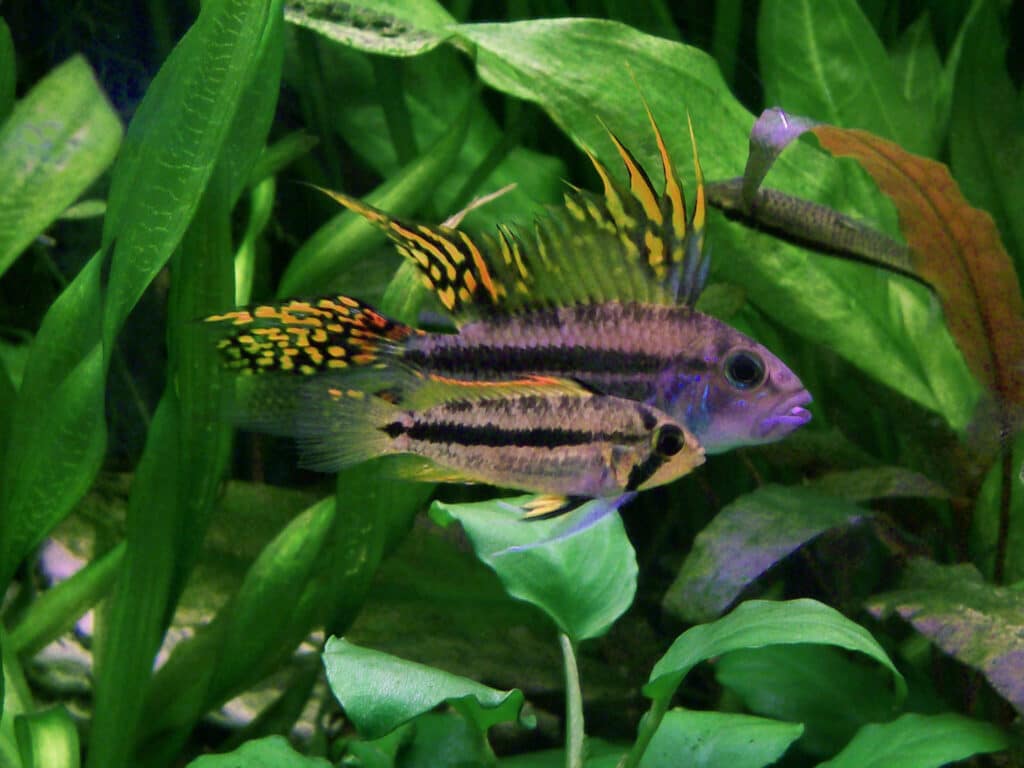
A clean tank is essential for Apistogramma care, so we recommend installing a filter system to keep water quality in check. On a similar note, regular water changes are crucial.
Where possible, another way to match the Apistogramma’s natural environment is to use sand substrate.
With the right care and attention, these beautiful fish can thrive in your tank. To achieve this, aim for suitable tank mates, a balanced diet, and an environment as close to the natural habitat as possible. Furthermore, monitor the behaviour and maintain a clean tank.
So, are you ready to embark on this Apistogramma adventure? Give these fantastic fish the special attention they deserve, and you’ll be rewarded with a thriving and visually stunning aquarium.
Notable mentions
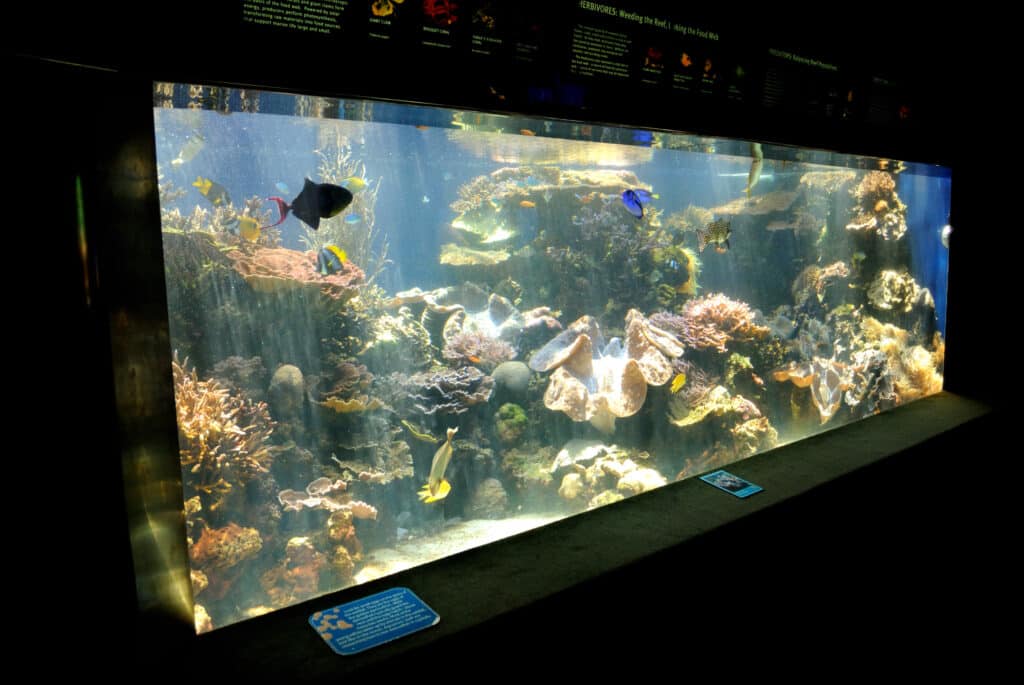
Water temperature: It is recommended for Apistogramma to be in waters of 22-27 C (72-82 F). It is also recommended to clean their water every two weeks.
Numbers and ratios: When it comes to how many Apistogramma you should keep in a tank, you could care for anywhere from one lone fish to a crowd! One male for every two to three females is the recommended ratio.
Lifespan: The average lifespan of an Apistrogramma is between five and ten years with proper care and maintenance.
Your questions answered about Apistogramma
If you still have questions about this topic, we have gathered and answered the most frequently asked questions from our readers and online search engines to inform you further.
Can Apistogramma be kept in a community tank?
Apistogramma can be kept in a community tank if they are housed with peaceful fish that thrive in similar environments.
Will Apistogramma eat small fish?
It is common knowledge that Apistogramma eat small fish in the wild. However, if you make sure to provide them with a well-balanced diet, this will help minimise this behaviour in your tank.
Is Apistogramma a beginner fish?
Due to their specific care requirements and unique territorial behaviour, it is not recommended to take on Apistogramma if you are just starting out with your tank.
Can I keep Apistogramma with neon tetras?
Yes, you can keep Apistogramma with neon tetras if the tank has sufficient space and hiding spots, and if you monitor their interactions to prevent aggression.
RELATED ARTICLES:
Top 5 unusual fish behaviours and characteristics

